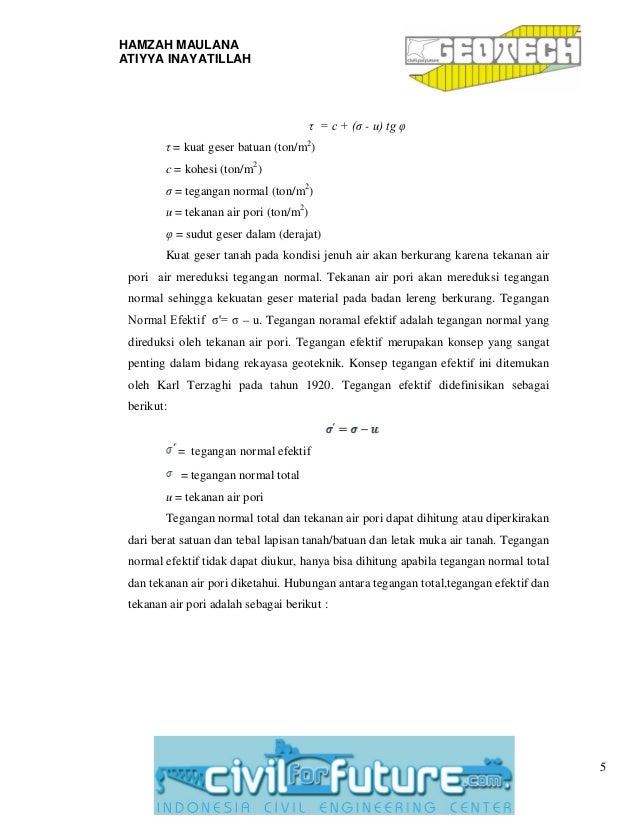


Slide Tutorial Rocscience Online
Slide Tutorial Rocscience. Rocscience software is extremely user-friendly, but if you need help dont worry Rocscience offers free technical support for all its products, provided by senior engineerdevelopers with experience researching and working in rock and soil. And all Rocscience products are backed by our 30-day money back guarantee. Langkah Analisis Kestabilan Lereng dengan Software Rocscience Slide Sebelum masuk ke Rocscience Slide geometri desain harus dibuat di AotoCAD dan disimpan dalam format dxf. Beberapa geometri desain harus dibuat di AutoCAD karena memodifikasi desain di Slide tidak selengkap dengan AutoCAD yang memang mempunyai spesifikasi sebagai drawing software. Search Methods Tutorial 1 – Weak Layer Model The following example will use a model with a non-linear weak layer, to demonstrate various issues related to searching. If you wish to carry out the steps in this tutorial, click here to download the SLIDE file search1block.sli. Open the file in SLIDE.
Slide Tutorial Rocscience Python
Multi-Scenario Modeling
Sarma Non-Vertical Slice Analysis
•
Soil geometry profile option
•
Use borehole data to define material layers
•
New pile analysis options
•
New material modeling options
New Seismic Analysis Options
•
Statistical correlation of material properties
•
Program interface improvements
•
Engine Optimization, new search options, and more…
Click here to be a Slide 7.0 Beta Tester!
RocNews Fall 2015
Multi-scenario modeling A major new modeling feature in Slide 7.0 is the ability to create and edit multiple variations of a Slide model within a single overall document file. This option is turned on in the Project Settings dialog:
There are two different “levels” within the multi-scenario option: 1. 2.
Models Scenarios
The sidebar document viewer in Slide 7.0 allows you to create and organize your models and scenarios. The following example illustrates a file with two Models (slope angles 40 and 45 degrees) with four Scenarios per model.
The distinction between models and scenarios is as follows: •
The primary attribute of a “model” is that geometry is constant (i.e. boundaries). If you edit the geometry it will automatically propagate to all scenarios within that model. To analyze different geometries (e.g. cut back a slope) you can do this by creating multiple copies of your model and modifying the geometry as required for each model.
Slide 7.0 Beta 1
RocNews Fall 2015
•
Multiple “scenarios” for a given “model” allow you to change input parameters for each scenario (e.g. material properties, groundwater, support, search methods) while maintaining constant geometry within a particular model.
New models or scenarios can be easily created, copied and edited as required. This is all done within the umbrella of a single (compressed zip) document which can be edited, saved and computed as a single file (file extension *.slmd). Another feature is that the material properties database is common to all models/scenarios, so there is no need to redefine properties for each model.
Slide 7.0 Beta 2
RocNews Fall 2015
Soil Geometry Profile The Soil Profile option is a further extension of geometry modeling capabilities. It allows you to define a master profile of your material boundaries (e.g. geological or soil profile). The profile is then used as a base template, over which you can use the regular boundary options (e.g. Add External, Add Material) to superimpose different slope geometries (e.g. cut back a slope). • •
This can be used in conjunction with the multi-model/multi-scenario option (described above), to analyze different slope geometries, while maintaining a constant master profile. The profile boundaries can be defined explicitly, or they can be automatically computed from borehole measurements.
The Soil Profile option is turned on in Project Settings:
This will enable the Profile workflow tab, and the profile modeling options in the menu and toolbar. In the example below, profile boundaries have been entered explicitly using the Add Soil Profile Boundary option. The overall extents of the profile are defined by a simple rectangular box (left, right, top, bottom), with coordinates entered in the sidebar.
Profile boundaries defined explicitly as user-defined polylines
Slide 7.0 Beta 3


Slide Tutorial Rocscience Tutorial
- The SLIDE Tutorial, Model Reference, Interpret Reference, and Verification documents are all available as. Programs → Rocscience → Slide → Slide. If the SLIDE application window is not already maximized, maximize it now, so that the full screen is available for viewing the model.
- Rocscience Slide3 Tutorial – 3D Slope Stability Analysis. September 27, 2020. This webinar from Rocscience, held on January 23rd, 2020, demonstrated the features of the powerful new Slide3 and its capabilities to solve complex and practical geotechnical problems.